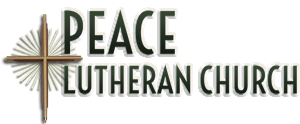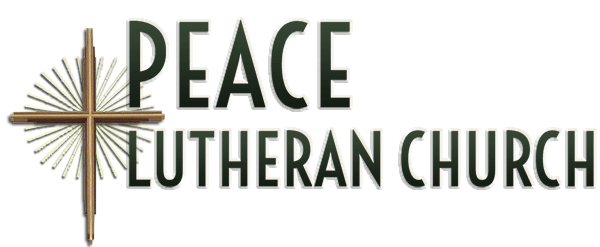Easter 3B
April 19, 2015
Peace Lutheran Church, Grass Valley, CA
A STORY:
Emily Habben’s (Wilmar MN) 5 year old had been working on saying the Lord’s Prayer for some time. One day she asked if he would recite it. Enthusiastic to share something he had learned, he ceremoniously began his recitation and spoke the words flawlessly. He ended with a rousing: “For thine is the kingdom and the power and the glory forever and ever. Amen.” and “you may be seated.” (The Lutheran, February, 20-05 pg 3)
THE TEACHING POINTS:
1) Remembering “blackboards and erasers”
2) The first lesson and Gospel are both sequels to an important part one of the story.
3) The sequel tells God’s “erase” for the sin and human weakness that shows up in part one.
4) Easter, forgiven people are called out to live forgiven and forgiving lives.
A CITATION:
Crabtree story: R. Scott Colglazier, “Finding a Faith That Makes Sense”, St. Louis: Chalice Press, 1996, 116-117.
THE MESSAGE:
This confession really dates me. You can probably just about figure out how old I am with this one. There was a time, you know, before computers, “power points”, and even before “overheads” and “white boards” or even “green boards”, that there were chalk or blackboards. Blackboards of some real or fake slate and chalk.
One routine I remember from country school was when I got to be old enough (this was a privilege for the older kids) in the rotation to go out into the schoolyard and clean the erasers—something we did by pounding them together, or on the sidewalk. There was a cloud of white dust every time we hit a couple of them together.
You see, the erasers were full of chalk, the chalk that had been erased from the black board as we prepared for a whole new lesson, or a whole new shift in subject matter. Language to math, or history to spelling. Once it was erased, it was gone, not to be retrieved again. All gone in a puff of chalk dust in the schoolyard.
Our first reading and Gospel have an interesting thing in common. It isn’t the resurrection of Jesus. It isn’t even the testimony of the resurrection. The commonality is that both readings are the second part of a longer story. Both are “sequels” grounded in another incident—incidents, by the way, which have a point all their own.
In acts, our reading is preceded by (3: 1-12) Peter and John stopping at the Temple gate to cure, in the name of Jesus, the crippled beggar. There was a crowd at the Temple that hour and the beggar was a usual sight to those entering and leaving. After his cure, Luke tells us, “He went into the temple with them–walking, jumping about and praising God” (3:8). Now that draws a crowd!
The second part of the story is Peter speaking God’s power through the scriptures, through raising Jesus Christ from the dead. The raising of the beggar as proof of Jesus’ power, God’s eraser—the result of forgiveness and new life in the name of Jesus.
The gospel is also a sequel. In the first part of the story, two disciples are traveling along the road to Emmaus when they meet the risen Lord in a stranger who joins them. They tell the stranger of Christ’s death and their dashed hopes. The stranger tells them of the proof positive of God’s love—revealed in the scriptures, and made alive in the resurrection of God’s Son. When they see Jesus in the stranger as they “break bread” Jesus disappears and they return to Jerusalem.
What we read today picks up as the two were telling their friends about the Emmaus experience. That’s when Jesus appears, and retells the story. And again offers the proof positive of God’s gifts, and the joyful result of new life in Jesus.
The common thread here is that in both sequels the meaning of the scriptures is about the forgiveness of sins. The meaning of the death and resurrection of Jesus is in His suffering dying and rising. It is about sins being wiped away. It is about new life being given. It is about the old being wiped away, erased so that renewal and rejoicing could come in.
Just like the eraser takes away what is on the black board and renewal comes in the pounding of the chalk dust into a puff of dust.
Or, to put it another way, there is a big reversal and change that happens when we see the first part of the events in conjunction with the second parts of the events. There is a “But . . ..” A “but . . .” to the human weakness, sinfulness and need of human beings. As an aside, in the Bible, that “but” or “however” is where we really get to the point of God’s action. Before the “but” is our need and the law. After the “but” is God’s answer and grace.
So, the meaning here is that neither the disciples nor the folks who witnessed the healing of the beggar “got it.” They didn’t figure out the fullest significance of what was happening. In fact, they were part of the problem, putting Jesus to death. Their sin and failures showed up through what was announced by the mouth of the prophets — that the Son of God would be put to death. The Son of God would be raised from the dead. The last word would be God’s action, resurrection.
But despite all of that, Peter says, God had this plan to bring life to the world through the death of Christ. Peter calls Jesus, “the Author of Life,” and in this case life came to us through death. The consequence for us is that “…your sins may be wiped out.” Get it? Wiped out!!
The consequence, though, is bigger than just knowing things are wiped out. It is about getting out and being alive. It is about living as Easter people. Forgiven, forgiving. Peaceful and sharing peace. Children of God. It is about being what we are—people who find rejoicing in our sins being wiped out—people who are alive in Christ.
Have you heard the story of the Army Veteran named John Crabtree, who had been receiving benefits from the VA? Wounded in Vietnam, on permanent disability, one day, out of the blue, he received and official government letter notifying him of his own death. It was quite a shock.
So he wrote the government telling them that he was indeed very much alive and wanted his benefits. The letter did no good. So he tired to call (have you ever tried to “call” the government?). He tired patience and persistence, finally, in desperation contacting a local TV station that aired a “human interest” story on his situation.
During the interview he was asked, “How do you feel about this whole ordeal?’’ The veteran chuckled and said, “Well, I feel a little frustration by it. Have you ever tried to prove that you ARE alive?”
That’s a good question for people who know the resurrection, who know God’s eraser, who know sins for given. Have we proven we are alive?
The proof, you see, is in living and speaking forgiveness. In families they are the ones who stay in touch with the member the rest of the family has cut off; they are the adult children who forgive the shortcomings of their parents and tend to them in their declining years; they are the family cooks who prepare special holiday or birthday meals, hoping that a family that shares stories and breaks bread will hold together and forgive one another the petty and large offenses family members can inflict on one another. Outside the home they are those who are voices and instruments of justice and forgiveness. They are the ones who know that the words we speak and the way we act will put a face on God for them and they will come to know that that divine face is open to anyone seeking forgiveness. But they must first meet that forgiveness through us, and if they do, they will come to know that there is another way to travel the road of life–other than aggression, violence, lies, greed, lust, anger and revenge. Thus, people will meet God’s emissaries of forgiveness in us.
This Easter time reminds us that each of us can start all over again. That God erases the past, our fears of death that keeps us locked up. God’s “but” speaks loudly to the future, that we, like Jesus, can be alive, living as His Children, forgiven and forgiving, living in His “peace be with you.”
Amen.


